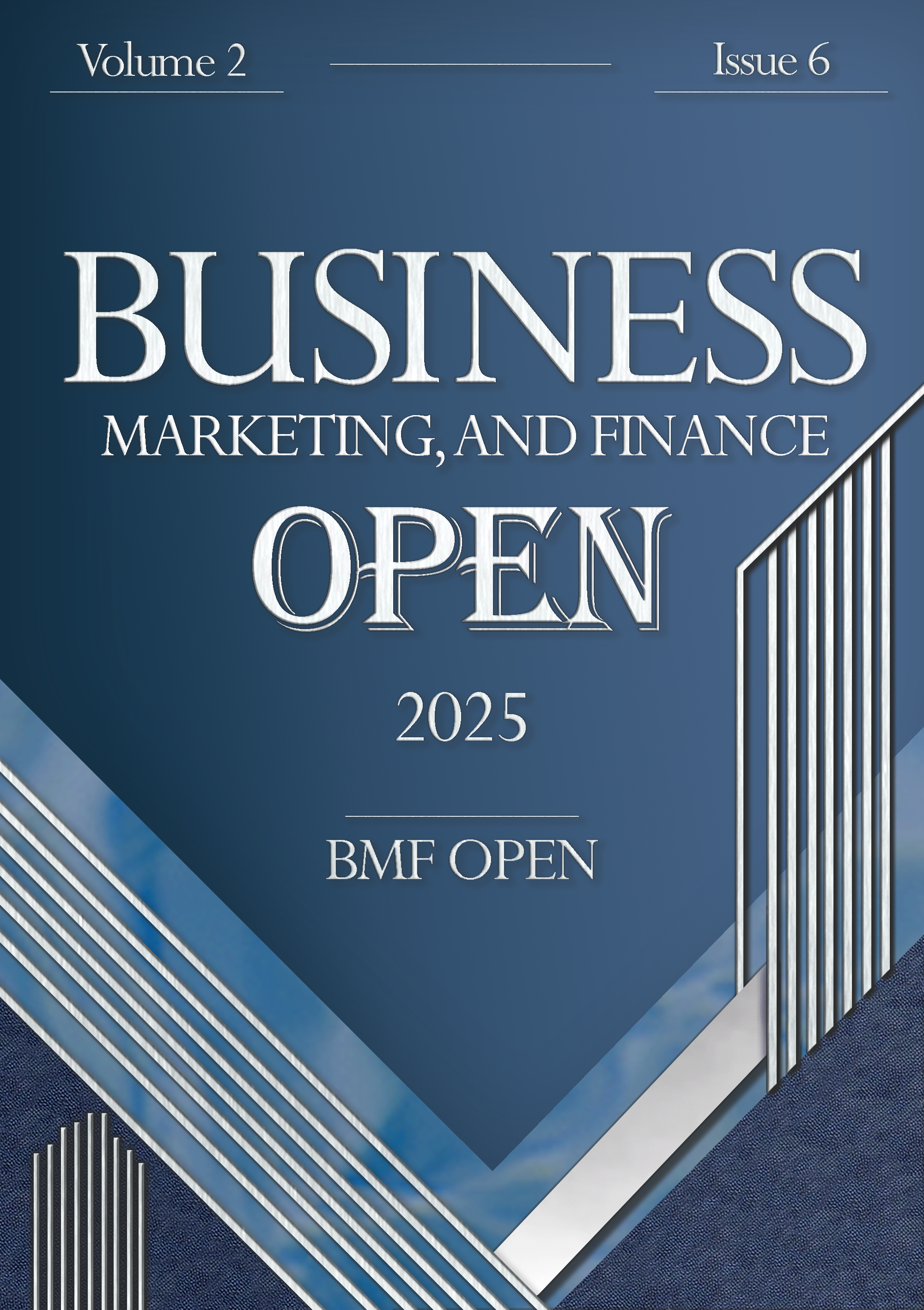Identifying Causal, Contextual, and Intervening Factors Influencing the Likelihood of Financial Fraud in Companies
Keywords:
Fraud, Financial Reporting, Fraudulent Financial ReportingAbstract
Today, given the increasing need of managers for accurate financial information to make managerial decisions regarding the long-term prospects of companies, and the need to attract domestic and foreign investors for capital funding and competition in this domain, financial reporting has gained special importance. At times, financial reporting may fail to provide accurate information to stakeholders, which can result either from accountants' mistakes or from fraudulent reporting by managers. Fraudulent managerial reporting in financial statements poses a significant threat to investors. However, in practice, there is no immediate method to detect such fraudulent managerial reporting. Therefore, paying attention to direct indicators affecting the likelihood of fraud in financial reporting is essential. Accordingly, this study aimed to identify the causal, contextual, and intervening factors that influence the likelihood of financial fraud in companies listed on the Tehran Stock Exchange. The present research adopts a qualitative and exploratory approach. According to the research methodology, dimensions, components, and indicators affecting the likelihood of financial fraud in companies were first extracted through interviews. Using the Delphi method, eight dimensions and 39 indicators were identified and agreed upon by experts. The results of this study showed that the dimensions of weak earnings-based characteristics, weaknesses in financial reporting, weaknesses in board characteristics, weaknesses in internal controls, weaknesses in corporate governance systems, weaknesses in financial features, and corporate characteristics affect the likelihood of financial fraud in companies. These dimensions were derived through theoretical studies, synthesizing expert opinions in the field of accounting and auditing, analyzing the views of the statistical population, and gathering insights from specialists in related research domains.
References
A. Bahrami, I. Noroush, A. Rad, and A. Mohammad Malgarni, "Fraud in Financial Statements and Modern Techniques Used to Detect It," Accounting and Auditing Studies, vol. 10, no. 38, pp. 105-118, 2021, doi: 10.22034/iaas.2021.134547.
F. F. Salal and A. Adel, "The Effect and Application of Management Motives for Detecting Fraud in Financial Reporting by Independent Auditors Examining the Impact of the Fraud Diamond Model Dimensions on Fraud in Financial Statements of Companies Listed on the Tehran Stock Exchange," Ferdowsi University of Mashhad, Faculty of Administrative and Economic Sciences Zand Higher Education Institute, Shiraz, Faculty of Humanities, 2020.
M. Borouneh, R. Baradaran Hassan Zadeh, A. Fazlzadeh, and Y. Badaour Nehendi, "A Model of Factors Influencing Fraud in Financial Statements with a Forensic Accounting Approach: Based on Thematic Analysis," Applied Research in Financial Reporting, vol. 11, no. 2, 2022.
H. Richard, "Using graph databases to detect financial fraud," Computer Fraud & Security, vol. 2020, no. 7, pp. 6-10, 2020, doi: 10.1016/S1361-3723(20)30073-7.
R. Files, G. S. Martin, and S. J. Rasmussen, "Regulator-cited cooperation credit and firm valu Evidence from enforcement actions," The Accounting Review, vol. 94, no. 4, pp. 275-302, 2019.
A. K. S. Craja and Lessmann, "Deep learning for detecting financial statement fraud," Decision Support Systems, vol. 139, p. 113421, 2020.
P. O. Shoetan, "Transforming Fintech Fraud Detection With Advanced Artificial Intelligence Algorithms," Finance & Accounting Research Journal, vol. 6, no. 4, pp. 602-625, 2024, doi: 10.51594/farj.v6i4.1036.
O. Odeyemi, "Reviewing the Role of AI in Fraud Detection and Prevention in Financial Services," International Journal of Science and Research Archive, vol. 11, no. 1, pp. 2101-2110, 2024, doi: 10.30574/ijsra.2024.11.1.0279.
R. B. Asha and K. K. R. Suresh, "Credit card fraud detection using artificial neural network," in Global Transitions Proceedings, 23 January 2021 2021.
M. K. Jonathan, "The future of financial fraud," Journal of Corporate Finance, 2020. [Online]. Available: https://doi.org/10.2139/ssrn.3642913.
S. Milojević, S. Knezevic, and V. Šebek, "Identification and prevention of fraudulent financial reporting," Tokovi osiguranja, vol. 40, pp. 146-182, 2024, doi: 10.5937/TokOsig2401146M.
F. D. Narulita, R. N. Baderi, and H. Hwihanus, "The Impact of Fraud on the Detection of Fraud in Financial Statements and Discretionary Accruals (Meta-Analysis Study)," Journal of Advances in Accounting, Economics, and Management, vol. 1, no. 4, pp. 1-16, 2024, doi: 10.47134/aaem.v1i4.348.
E. Mohammadzadeh, "Predicting Fraudulent Financial Reporting Schemes Using Data Mining Methods," Alzahra University, Faculty of Socia, 2020.
S. Gharibi, "The Role of Big Data in Assisting Auditors in Collecting Evidence and Detecting Fraud in Financial Statements," 2019.
C. Yuh-Jen, C. Wan, M. Yuh, and H. Jyun, "Fraud detection for financial statements of business groups," International Journal of Accounting Information Systems, vol. 32, pp. 1-2, 2019, doi: 10.1016/j.accinf.2018.11.004.
A. Rahpeyma, M. Naderinasab, and M. Nasiri Farsani, "Analysis of Corruption in the Managerial Elections of Sports Federations and Its Impact on Development Strategies," (in en), Dynamic Management and Business Analysis, vol. 3, no. 2, pp. 34-50, 2024, doi: 10.22034/dmbaj.2024.2040251.1110.
V. Fakhr-Fatohi, "Presenting a Combined Model for Identifying and Prioritizing Factors Influencing Financial Fraud Using the Fuzzy ANP Technique," Mehregan Higher Education Institute, Accounting Department, 2019.
F. Kaka, "Detecting Fraud in Financial Transactions Using a Combined Classifier Approach," 2018.
S. Mehrani and A. Rahimipour, "Optimizing the Beneish Fraud Model in Predicting Financial Statement Restatements Using a Combination of Neural Networks and Genetic Algorithms," Journal of Accounting and Management Auditing, vol. 54, pp. 73-87, 2025.
M. Kiran, S. Pazhanirajan, and Mallapur, "Selection of most significant variables to detect fraud in financial statements," in Materials Today: Proceedings, 2020.
Downloads
Published
Submitted
Revised
Accepted
Issue
Section
License
Copyright (c) 2025 Seyyed Saeid Mousakazemi (Author); Faegh Ahmadi; Mohammad Hossein Ranjbar (Author)

This work is licensed under a Creative Commons Attribution-NonCommercial 4.0 International License.







